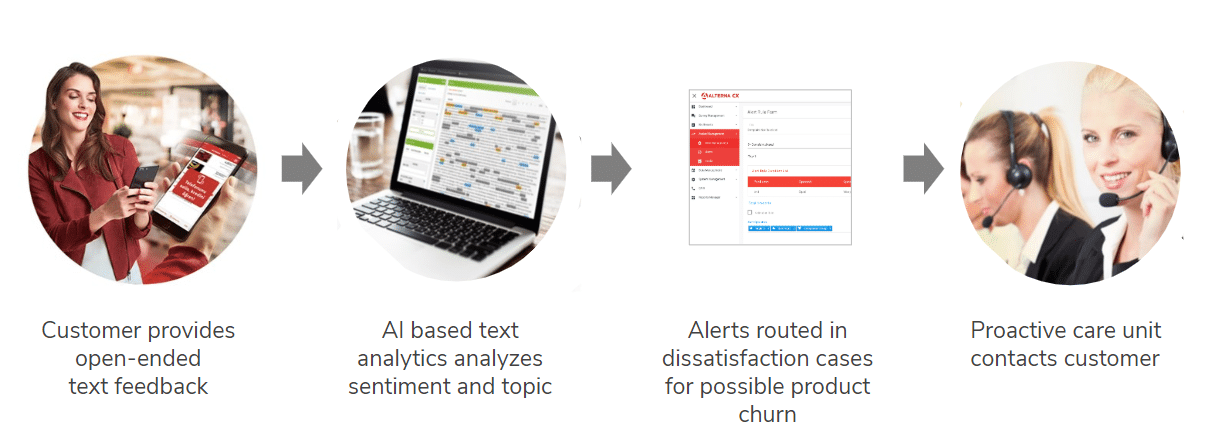Over the years, as enterprises started designing their customer experience journeys, we began to hear and attend more design thinking workshops. During these sessions, a group of employees gets together to understand their customers better and visualize the dynamic customer journey through different purchase or service paths. As an outcome, customer relations teams end up with multiple customer experience journeys and start tracking each journey to improve the experience of customers continuously.
We talked with an expert, Valerie Peck, and she explained why dynamic customer journey design is vital to improve customer experiences and why the design workshop is just the beginning.
During the global pandemic, we have witnessed that customer needs to be shifted overnight. Companies had to make changes to their customer experience journey mapping and episodes during this time. They may need to make further changes as the situation evolves. Ensuring that customers experience the customer journey as designed can be made possible through feedback from users or customers. With that feedback, companies can be more confident in both the quality and the consistency of the customer experience journey. A dynamic journey design mechanism would have made this shift easier.
So how can enterprises make sure to design customer experience journeys that are dynamic?
What is Dynamic Journey Mapping?
What if companies could understand exactly where things are going right or wrong, and make sure that customer experience journeys are affected at a minimum when things need to change? That is where mining the data and then layering that data comes into the picture. Through dynamic customer journey mapping and VoC measurement, companies can pile all the information together and understand what interactions are taking place in each moment of truth, and understand the pain points associated with the interactions with that specific customer.
A living map allows you to understand the changes in customer behavior as well as different groups of customers with different expectations. Documenting the front stage, which is the customer experience, with the backstage of what the company is doing, has shown success over time. The dynamic journey map allows you to start seeing the differences in behavior and how you need to interact with your customers to understand both macro CX, which is acquisition, retention, and growth, as well as micro CX, communications, and the user experience.
Companies need to understand the customer experience journey stages first with the segmentation by the value of the customers. So, how much revenue or profit they are producing for the company, their expectation, needs, and lastly their behavior; meaning how and where do they interact with your company. This is another data flow when well aggregated, that can give the company a great picture of who they should focus on, what they need, and where companies might find them. So, mapping each of these allows lots of different use cases to understand things like the most profitable spending and what might companies need to postpone.
Through a dynamic customer journey mapping, companies can start taking action and eliminate pain points as they go through the experience. It gives the ability not only to affect both VoC and NPS but to create a living map where companies can have continuous improvement monitored. In terms of customer growth and profitability, having a living view vs. “wall art” allows the organization to understand what’s going on quickly, take action if necessary, and how that action is improving.
Managing “outside-in” data to keep the journey dynamic
So how can VoC programs dynamically feed into this continuous discipline by bringing the outside in perspective for customers? VoC programs indeed automate a loop for continuous customer experience journey improvement. It begins with listening to the VoC across selected journeys and touchpoints. Within the digital customer experience journey, surveys, open-ended text, voice, and visuals are all possible sources for getting feedback from customers when they interact with the company.
AI-based machine learning models today make it possible to understand the topics and sentiments verbatim and voice feedback. Root causes of dissatisfaction and their quantitative impact can now be reliably analyzed. These insights do not stay in silos anymore and are shared across the organization in multi-level, domain-specific dashboards.
Finally, when something goes wrong, automated tasks are triggered in real-time to alert the related employee or team for taking improvement action.
Through listening smart, acting in real-time, and sharing insight into the organization, a VoC Program dynamically supports the design of customer experience journey management discipline at three levels:

- First, it enables real-time action to fix issues. If there is a smell in the store or if there is a delay in the delivery of a product, VoC programs trigger actions to fix the issues in real-time, even before they affect customer loyalty. For example, a banking customer talks about dissatisfaction with the returns from the investment account. AI-based text analytics analyzes NPS scores and customer feedback in real-time for sentiment and topics. After identifying the customer’s dissatisfaction with the investment account due to low returns, an alert is routed for potential product churn. The proactive care unit contacts the customer for retention.
- Design Improvements: It is good to fix individual cases one by one, but what if there is a systemic issue? What if a significant portion of your customers believe that they have been misinformed? Then, the company may need to intervene and make changes in the customer experience journey design and processes. The VoC program this time provides in-depth insight into the root causes of dissatisfaction as an invaluable input to the experience redesign process. For example, a retailer gathers customer feedback through a VoC program. Instead of just asking “what were we missing,” the retailer lets the customer tell his/her story and, as a result, has more insight to take action. Let’s say that the customer responds, “there was not enough variety, and the product quality was mediocre.” The retailer not only knows that the customer is dissatisfied with product quality but also knows about the insufficiency in product variety as perceived by the customer. By continuing the conversation as a dialogue, the retailer can continue to ask “for which products, would you like to see more variety.” A dialogue like this one seems to be very typical between a customer and a seller. However, when there are tens of thousands, even millions of customers, it is impossible to have such conversations with every customer. That’s where AI-based machine learning technology comes into the picture to help you have these conversations for more in-depth insight from your customers to redesign their experiences.
- Strategic Investments: Typically, CX professionals face a myriad of customer experience issues to address. Some are minor, and some are critical. VoC programs provide input on specific CX improvements to determine which problems have the most impact on business results. In our final example, a telecom operator faces the challenge of deciding where to invest its limited budget and resources for CX improvements to get the most business impact. Through the VoC program, the company knows how much influence each of these areas has on crucial business KPI’s such as NPS and average revenue per user. They know that a 1% increase in satisfaction from data speed will likely increase NPS by 2.1%. On the other hand, a 1% decrease in satisfaction will probably drop NPS by 3.4%. It is now much easier to make an investment decision to increase data speed. Below are examples for each level:

Many companies build a VoC program, measure NPS, and design one ‘wall art journey’ and say they are done. Yet, a living customer experience journey perspective, continuously updated and informed by BOTH inside-out and outside-in data, is needed. VoC brings in the outside-in perspective to dynamic customer journey management by:
- Taking proactive actions for fixing issues before it is too late
- Increasing insight and quality for design improvements
- Understanding the business impact of CX dimensions for strategic investments
To learn more about how a “dynamic” experience is vital to improve and better manage customer experience, make sure to watch our on-demand webinar here.
If you have a specific question, feel free to contact the author directly.
What is the customer experience journey?
The Customer experience journey is a set of actual or potential steps that a customer goes through throughout his relationship with an organization or a brand as an embodiment of the organization.
What are the 7 steps to map the customer journey?
- Understanding the segmentation by the value of customer
- Discovering how much revenue or profit the customer is producing for the company
- Get the information regarding the customer expectation
- Evaluation of customer needs
- Analyzing customer behavior
- Monitoring customer interactions, communications
- Deciding whom to focus on




